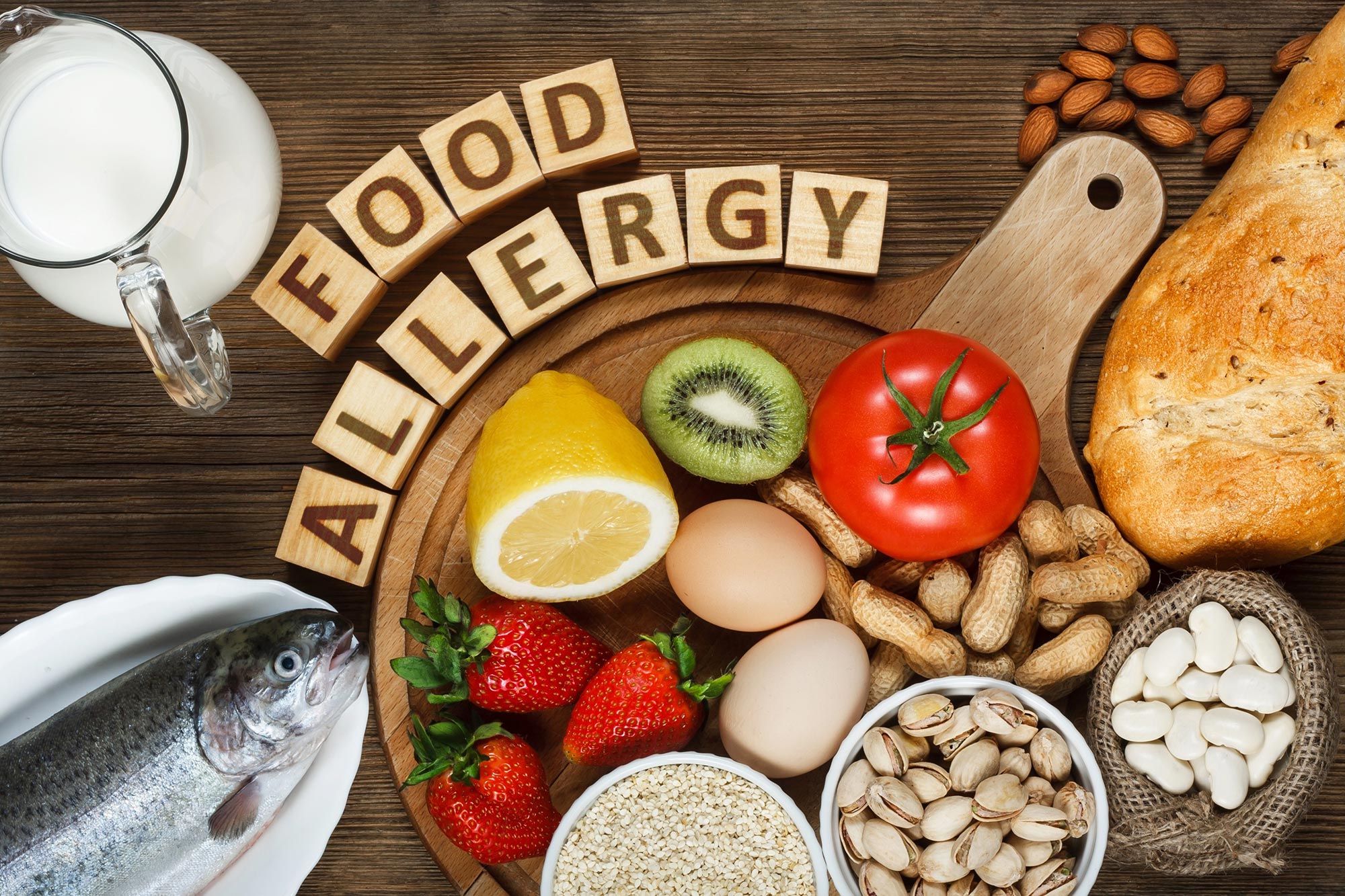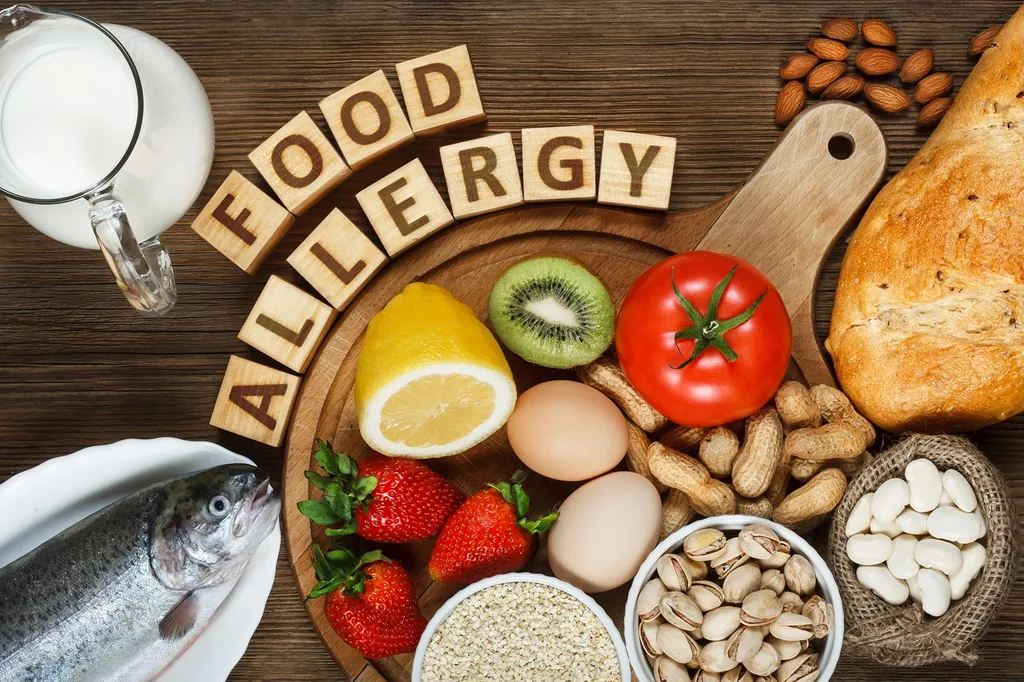

Some of the most common foods that people are allergic to include shellfish, eggs, peanuts, soy foods, wheat, sesame, tree nuts, fish, and milk.
Many people confuse food allergies and food intolerances, but they’re two different things. Understanding the difference is important if you experience allergy-like symptoms after eating certain foods.
What is a Food Allergy?
A food allergy occurs when your immune system overreacts to certain proteins in foods. When you consume foods you’re allergic to, it triggers immune cells in your bloodstream to release chemicals, such as histamine, that cause allergy symptoms such as:
- Hives
- Skin rash
- Itching of the lips, mouth, tongue, throat, and face
- Redness or swelling of the lips, mouth, tongue, throat, and face
- Swelling of the skin around the eyes
With a food allergy, your immune system mistakes proteins in certain foods as harmful, triggering an immune response. Food allergies can be mild or life-threatening. The most serious is called an anaphylactic reaction which causes symptoms such as:
- Lightheadedness or fainting
- Nausea, vomiting, stomach pain
- Trouble breathing or chest tightness
- Feeling as though your throat is closing
- Swelling of the mouth, lips, or tongue
- Skin redness
- Rapid pulse
- Low blood pressure
- Complete loss of consciousness
One distinguishing feature of food allergies is that the symptoms start almost immediately, or within minutes, of eating a food you’re allergic to.

Shellfish, eggs, peanuts, soy foods, wheat, sesame, tree nuts, fish, and milk are some of the common foods many people are allergic to.
Although it’s possible to be allergic to any food, most food allergies are due to the following foods:
- Shellfish
- Peanuts
- Eggs
- Wheat
- Soy foods
- Tree nuts
- Sesame
- Fish
- Milk
Although you can develop allergies at any time during life, they most commonly show up during childhood. However, according to foodallergy.org, 40% of people who develop a food allergy to fish experience their first symptoms as an adult.
Testing for Food Allergies
To know for sure whether you have an allergy, you may need testing.
Food allergy testing may involve:
- A skin prick test: A tiny amount of the suspected allergen is placed on the skin of your forearm or back. A technician then pricks your skin with a needle, so the substance seeps under the surface of your skin. A raised bump (hive) that appears within 15 minutes indicates an allergic reaction.
- An allergy blood test: In this test, a small sample of blood is taken from you at a doctor’s office or lab and sent to a special testing facility. It takes about one week to get results from an allergy blood test.
- Food challenge: If both an allergy blood test and skin prick test are negative, but you still suspect you’re allergic to certain foods, you may need to undergo an oral food challenge at an allergist’s office. For this procedure, you eat various amounts of the suspected allergen under medical supervision, while your doctor monitors for signs and symptoms of an allergic reaction.

Many people are lactose intolerant, meaning they do not efficiently digest lactose, a natural sugar in milk and other dairy products. Drinking milk is likely to give a lactose intolerant person gastrointestinal symptoms, such as gas, bloating, and diarrhea.
What is a food intolerance?
A food intolerance is when your body reacts negatively to a food, beverage, or additive to a food. Yet a food intolerance is not an allergy, since it doesn’t activate your immune system.
As mentioned, an allergic food reaction can be severe or life-threatening. In contrast, food intolerance symptoms mainly cause digestive symptoms. Food intolerances may be caused by low levels of enzymes needed to digest a particular food. For example, people with lactose intolerance are less efficient at digesting lactose, a natural sugar in milk and other dairy products. When they eat foods containing lactose, they may experience gastrointestinal symptoms, such as bloating and diarrhea.
Some people have intolerances to:
Fructose. This type of sugar is found in honey, some fruits and vegetables, and high-fructose corn syrup (HFCS). Many people with fructose intolerance also experience symptoms when they eat foods that contain artificial sweeteners like sorbitol and xylitol. These sugars are sometimes added to sugar-free gum and other sugar-free foods.
Monosodium glutamate (MSG). MSG is a flavor enhancer added to many Asian foods, canned vegetables, seasoned snack foods, salad dressings, and soups. Some people with MSG intolerance may also have reactions to yeast extract and protein hydrolysates, which are used as natural flavor enhancers in many processed foods.
Gluten intolerance: Some people can’t digest gluten, which is a protein commonly found in wheat, rye, and barley. Eating breads and pastas that contain gluten may cause gas, bloating, abdominal pain, diarrhea, or constipation. Gluten intolerance is not the same as celiac disease, a condition that involves the immune system and can damage the small intestine.
If You Have a Food Intolerance, You May Tolerate Small Quantities
With a food intolerance, you may tolerate small amounts of a problem food without experiencing symptoms. For example, some people with lactose intolerance can drink small amounts of milk without getting sick. Others find they have no problems if they take lactase enzyme pills before drinking milk (these are available over the counter). But if you eat too much of the offending food or have it too often, you might have unpleasant symptoms.
If you think you might have a food intolerance, see your doctor to rule out other possible causes of your symptoms (like irritable bowel syndrome or celiac disease). Then work with your doctor to find ways to manage your symptoms, so they don’t interfere with your daily life.
Unlike food allergies, food intolerances don’t involve the immune system or the release of histamine. So, the symptoms don’t show up right after eating a food you’re intolerant to, and may not appear until hours or even days after eating a food.
Diagnosing Food Intolerances
Food intolerances can be tricky to diagnose. The first step is to track your symptoms–including physical and mental ones–and when they happen in relation to what you eat. This will help you determine whether there’s a pattern.
Another approach is to use an elimination diet. Elimination diets involve cutting out certain foods for several weeks and then reintroducing them one at a time. This process can help you spot the foods that are causing problems
Intolerances are often tricky to diagnose because they can be cumulative–you might not feel symptoms until you’ve had a certain amount of the offending food over several days or weeks. Many people blame their symptoms on something as vague as “stress,” meaning a food intolerance may go undiagnosed for months or years.
The Bottom Line
Now you know the difference between a food allergy and a food intolerance. When you’re allergic to a food, your immune system overreacts and causes potentially life-threatening symptoms. Food intolerances, however, don’t involve your immune system. Both can be problematic, though. The first step is to visit your doctor and make sure nothing else is going on. They may recommend allergy testing. If allergy tests are negative, you can work on identifying foods that may cause food intolerance symptoms.
References:
- “Food Allergies | FDA.” 18 Apr. 2022, fda.gov/food/food-labeling-nutrition/food-allergies.
- “Common Allergens – Food Allergy Research & Education.” foodallergy.org/living-food-allergies/food-allergy-essentials/common-allergens.
- “Common Food Allergies: Symptoms, Triggers, and Diagnosis.” 20 Apr. 2022, verywellhealth.com/the-most-common-food-allergies-1324134.